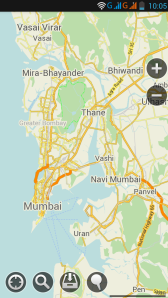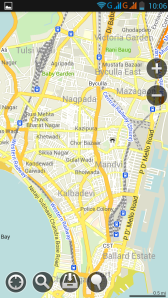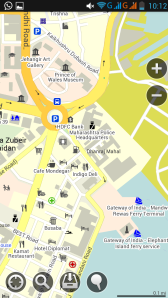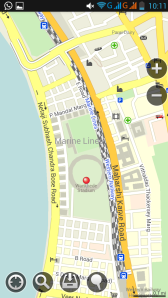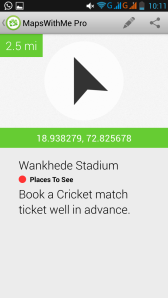Being the frequent travelers that we are, one of the questions that we get asked a lot is how we can afford to travel so often. And while Josh and I thoroughly enjoy living the good life in luxury hotels and spas, the fact is we wouldn’t be able to travel as often if we spent all our money on luxury accommodation. So we often choose to stay in lower budget accommodations, such as bed and breakfasts or boutique hotels. But when we are really looking to save money, we stay in hostels.
When we tell people that we stay in hostels, their reaction says it all; people don’t really understand what a hostel is or how much they vary in quality and amenities. While some generalizations about hostels could be true, in many cases they are not. So we decided to devote a post purely to dispel some of the common misconceptions about hostels.
Hostels Then vs. Now
Hostels originated in Germany back around the early 1900’s. They were specifically developed for the city youth so that they could get out of the city and explore the outdoors. To keep prices down, kids typically helped with chores and basically ran it themselves.
Nowadays, that original model is more of the exception rather than the norm. In fact, more and more hostels are starting to look like boutique hotels, and they are adding amenities such as swimming pools and saunas! However, the rule “you get what you pay for” definitely applies for hostels. So if you are looking for more amenities, then you will likely pay higher prices.
BackHome Hostel: Clean, Modern and Cool Elevated Walkways with Greenery – Kuala Lumpur, Malaysia
The reason we like hostels is that it puts the power back in the hands of the traveler; choosing what matters to you, and how much you are willing to pay for it. There is such a variety of hostel properties out there now, all at different price points. So in the end, it all comes down to tradeoffs and personal preferences of the traveler.
Myths
1. Hostels are only for young travelers
While some hostels originally had an age requirement (and some still do), many do not. Josh and I are in our 30’s, and we stay in hostels quite often. But we’ve seen many older people staying in hostels as well, even up into their 60’s! The saying “age is nothing but a number” applies here because all hostel-goers have one thing in common…a sense of adventure!
2. Hostels are only for backpackers or solo travelers
While many hostel guests are backpackers looking for cheap accommodation, we’ve seen many other types of people staying there. We’ve seen married couples, families with kids, and even people on business staying in hostels. In fact, this last weekend we met someone in Asheville staying at our hostel who was a lawyer! So you don’t have to fit into a certain stereotype to stay in a hostel.
Enjoying the view before our adventure at Plus Florence Hostel – Florence, Italy
3. Hostels only provide dormitory accommodations
Yes hostels tend to have dormitory environments, but many hostels now offer additional options to appeal to a wider variety of travelers. Typically, these room options are at varying price points.
We’ve stayed in dorm rooms where there were 12 bunks, and in other places, we’ve stayed in a room with only 4 bunks. We’ve also seen unique “pods” that are similar to bunks, but offer more space and privacy with walls on three sides and a sliding curtain to block out light and noise. And many hostels even have private rooms, yes private rooms!
Private Room at BackHome Hostel – Kuala Lumpur, Malaysia
Bathrooms are another item that you should take into consideration because hostels vary. Some rooms (dorm or privates) will have an ensuite bathroom, while others will just have bathrooms on the floor that you share. Personally, if we are in a large dorm we prefer a shared bathroom outside the room because it is less disturbing to our bunkmates. But if you splurge on a private room with an ensuite bathroom, then its just the same as being in a typical hotel room. Every property is different and personal preferences are different, so be sure to check in advance & pick what is best for you.
4. Hostels offer no amenities
With regard to amenities, again it depends on what matters to you and how much you are willing to pay. Many hostels will provide coffee and tea, and others may offer a basic breakfast too. Some have a restaurant or bar, but most of them will at least have a kitchen area that you can use.
Open kitchen makes it fun to meet fellow travelers over a cup of coffee at Sweet Pea Hostel – Asheville, NC
We recently stayed at a hostel in Seattle that provided us with all the ingredients for breakfast (eggs, bread, and pre-made pancake batter) so that we could make our own breakfast when we woke up! Kitchens are a great amenity if you are staying in an area for an extended amount of time because it can be expensive to dine out for every meal. Plus, we actually love going to local markets and buying food, so having a kitchen is super convenient!
Cooking in the common kitchen at The Green Tortoise Hostel – Seattle, Washington
Other amenities we have run across through our hostel stays include: swimming pools (indoor and out), hot tubs, saunas, rooftop terraces, nightclubs (in the basement), free bicycles, free movies, free walking tours, free dinners (taco night or spaghetti night), games, book exchanges, group activities/events, and of course wi-fi. Overall, not a bad deal, right?!?!
Great place to come back to after a full day of trekking – The Siem Reap Hostel in Cambodia
5. Hostels are only in Europe
This is a very common misconception. While hostels originated in Europe, they have quickly expanded around the world. We’ve stayed in some very nice hostels in Asia and even the United States. Yes, there are hostels in the US; this is a shock to most people! Most hostels in the US are limited to the big cities, or at least areas that have a lot of tourism. We’ve stayed in hostels in Asheville, Seattle, and will be staying in one on Miami’s SouthBeach next month!
Additional Benefits to Hostels
Besides price, hostels offer a number of other benefits that you don’t get in most hotels. First, hostels are known for having a communal and homey atmosphere. They have common areas where travelers get together to visit and share travel tips. This is a great way to learn about sights to see (or avoid) during your trip. I’ve gotten some of the best tips from fellow travelers over the years.
Inviting common living room at the Sweet Peas Hostel. Great place to drink your morning coffee and relax by the windows. Asheville NC
Another perk to staying in a hostel is that they are typically centrally located near all the best sights and tend to be close to public transportation. The last thing you want when you travel is to go halfway around the world to be staying on the outskirts of town. If you are anything like us, you want to be able to step out your door and be in the middle of it all!
Sometimes it all about location and practicality. Historic Dublin District – Barnacles Hostel Dublin
Words of Warning
Now, while we are preaching the benefits of staying in hostels we must say that they are not for everyone. There is no daily maid service, things aren’t always perfect, and sometimes guests are asked to help out (such as making your bed and removing your bedding when you leave). Some hostels may not provide towels, or will ask that you bring your own lock to keep your items secure. So if you can’t deal with these quirks, then a hostel probably isn’t for you.
Every single hostel is different. So our best piece of advice is to review the amenities carefully and decide what matters most to you. We also highly recommend that you read the reviews and the ratings of the hostels. Not all hostels are created equal, so hearing what other travelers have said about the hostel is very important and can help set your expectations.
How / Where to Book
You typically won’t find hostels mainstream booking engines. The best place to go is onto a hostel specific site (below):
Our Top Hostel Stays – Check Them Out!
Credit – This lovely article is by Liz & Josh on peanutsorpretzels.com. I absolutely urge you to visit their post by clicking here!
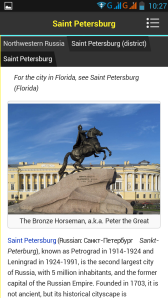
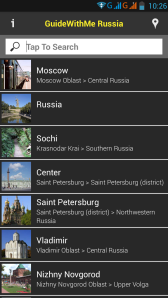 we don’t always get the best deals on communication and at such times offline maps come in handy. GuidesWithMe is completely offline and that gives you the liberty to get a decent over view of places at your convenience. You also have telephone numbers of the places that are famous, which can be helpful when you are out all day and need to call up to check availability. There’s an inbuilt map which can be downloaded as an add-on to keep you pointed in the right direction. Here are some pros & cons:
we don’t always get the best deals on communication and at such times offline maps come in handy. GuidesWithMe is completely offline and that gives you the liberty to get a decent over view of places at your convenience. You also have telephone numbers of the places that are famous, which can be helpful when you are out all day and need to call up to check availability. There’s an inbuilt map which can be downloaded as an add-on to keep you pointed in the right direction. Here are some pros & cons: